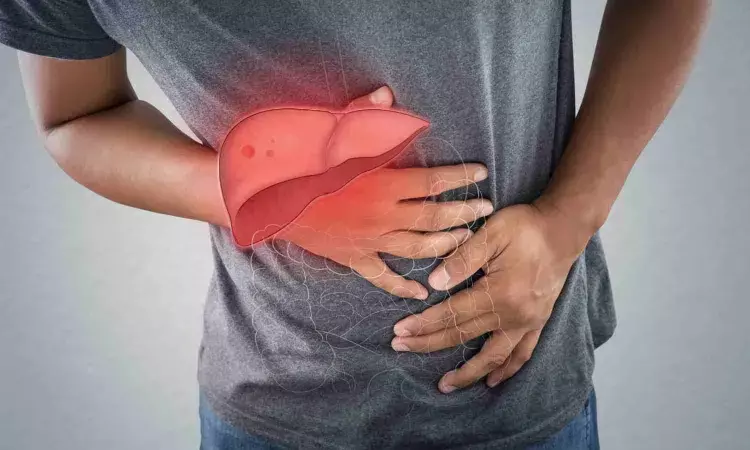- Home
- Medical news & Guidelines
- Anesthesiology
- Cardiology and CTVS
- Critical Care
- Dentistry
- Dermatology
- Diabetes and Endocrinology
- ENT
- Gastroenterology
- Medicine
- Nephrology
- Neurology
- Obstretics-Gynaecology
- Oncology
- Ophthalmology
- Orthopaedics
- Pediatrics-Neonatology
- Psychiatry
- Pulmonology
- Radiology
- Surgery
- Urology
- Laboratory Medicine
- Diet
- Nursing
- Paramedical
- Physiotherapy
- Health news
- Fact Check
- Bone Health Fact Check
- Brain Health Fact Check
- Cancer Related Fact Check
- Child Care Fact Check
- Dental and oral health fact check
- Diabetes and metabolic health fact check
- Diet and Nutrition Fact Check
- Eye and ENT Care Fact Check
- Fitness fact check
- Gut health fact check
- Heart health fact check
- Kidney health fact check
- Medical education fact check
- Men's health fact check
- Respiratory fact check
- Skin and hair care fact check
- Vaccine and Immunization fact check
- Women's health fact check
- AYUSH
- State News
- Andaman and Nicobar Islands
- Andhra Pradesh
- Arunachal Pradesh
- Assam
- Bihar
- Chandigarh
- Chattisgarh
- Dadra and Nagar Haveli
- Daman and Diu
- Delhi
- Goa
- Gujarat
- Haryana
- Himachal Pradesh
- Jammu & Kashmir
- Jharkhand
- Karnataka
- Kerala
- Ladakh
- Lakshadweep
- Madhya Pradesh
- Maharashtra
- Manipur
- Meghalaya
- Mizoram
- Nagaland
- Odisha
- Puducherry
- Punjab
- Rajasthan
- Sikkim
- Tamil Nadu
- Telangana
- Tripura
- Uttar Pradesh
- Uttrakhand
- West Bengal
- Medical Education
- Industry
Waist-to-height ratio outperforms BMI in detecting risk of fatty liver disease and liver cirrhosis: Study

Excess fat mass estimated by waist circumference-to-height ratio predicts the risk of liver damage better than body mass index (BMI) estimated obesity, a new study shows. Waist-to-height ratio is a cheap and universally accessible tool to detect the risk of fatty liver disease both in the young and adult population. The study was conducted at the University of Eastern Finland, and the results were published in the Journal of the Endocrine Society.
In the present study, 6,464 children, adolescents and adults between 12 and 80 years of age were drawn from the United States National Health and Nutrition Examination Survey (NHANES) conducted between 2021 and 2023. Non-invasive liver scans were conducted in all participants by transient elastography, based on which their risk of liver steatosis or fibrosis was classified. The prevalence of significant or advanced liver fibrosis was 7.1%, while 4.9% had liver cirrhosis. More than 1 in 4 (26.1%) participants had suspected liver steatosis, while less than 1% had severe liver steatosis.
Previous studies in adults have shown that BMI-diagnosed obesity is a risk factor for liver steatosis. However, recent clinical consensus statements have recommended that obesity should not be diagnosed with BMI alone but confirmed with another measure such as waist-to-height ratio.
In a recent study, waist-to-height ratio was discovered as a highly sensitive and specific predictor of dual-energy Xray absorptiometry-measured total body fat mass and abdominal fat mass in the pediatric and young adult population. Waist-to-height ratio cutpoints for normal, high and excess fat mass were established and have since been validated to detect the risk of type 2 diabetes and bone fracture. The present study examined if these cutpoints can predict liver steatosis and fibrosis in a multiracial population.
The prevalence of waist-to-height-ratio-estimated normal fat mass (0.40 – <0.50), high fat mass (0.5 – <0.53) and excess fat mass indicating obesity (≥0.53) was 20.3%, 13.6% and 64.5%, respectively. After full adjustments for covariates, normal fat mass had a 48% protective effect against liver steatosis and a 52% protective effect against liver fibrosis or cirrhosis. High fat mass predicted 63% higher odds of liver steatosis and 31% higher odds of liver fibrosis or cirrhosis. Excess fat mass predicted four-fold higher odds of liver steatosis and 61% higher odds of liver fibrosis or cirrhosis.
Waist-to-height-ratio-estimated high fat mass and excess fat mass separately predicted higher odds of liver steatosis nearly two-fold and six-fold, respectively, better than BMI-overweight and BMI-obesity. The study accounted for age, sex, systolic blood pressure, heart rate, educational status, smoking status, race, sedentary time, moderate physical activity, fasting insulin, glucose, total cholesterol and high-sensitivity C-reactive protein.
“Remarkably, the findings were consistent regardless of sex and age. In addition, the findings were similar across the studied White, Black, Mexican-American and Hispanic populations. The simple and universally accessible waist-to-height measurement is useful in clinical and public health practice for liver disease screening, prevention, diagnosis and management globally,” says Andrew Agbaje, physician and associate professor (docent) of Clinical Epidemiology and Child Health at the University of Eastern Finland.
Reference:
Andrew O Agbaje, Novel Pediatric Waist-to-height Ratio Fat Mass Cutoff Predicts Liver Steatosis and Fibrosis Better than Body Mass Index: The NHANES, Journal of the Endocrine Society, Volume 9, Issue 7, July 2025, bvaf079, https://doi.org/10.1210/jendso/bvaf079
Dr Kamal Kant Kohli-MBBS, DTCD- a chest specialist with more than 30 years of practice and a flair for writing clinical articles, Dr Kamal Kant Kohli joined Medical Dialogues as a Chief Editor of Medical News. Besides writing articles, as an editor, he proofreads and verifies all the medical content published on Medical Dialogues including those coming from journals, studies,medical conferences,guidelines etc. Email: drkohli@medicaldialogues.in. Contact no. 011-43720751


